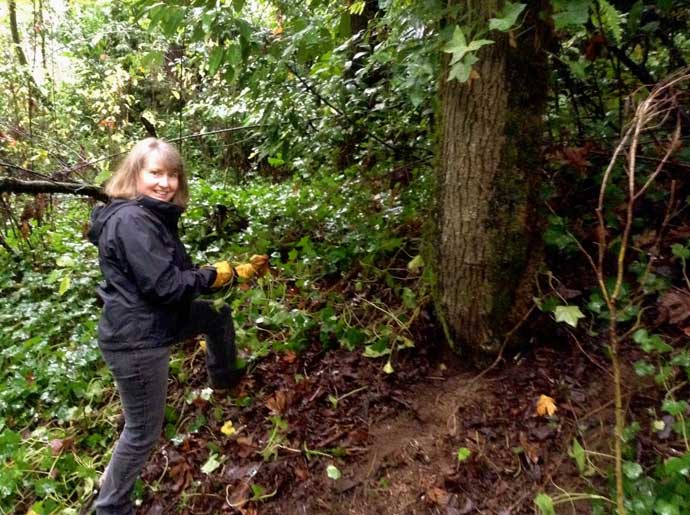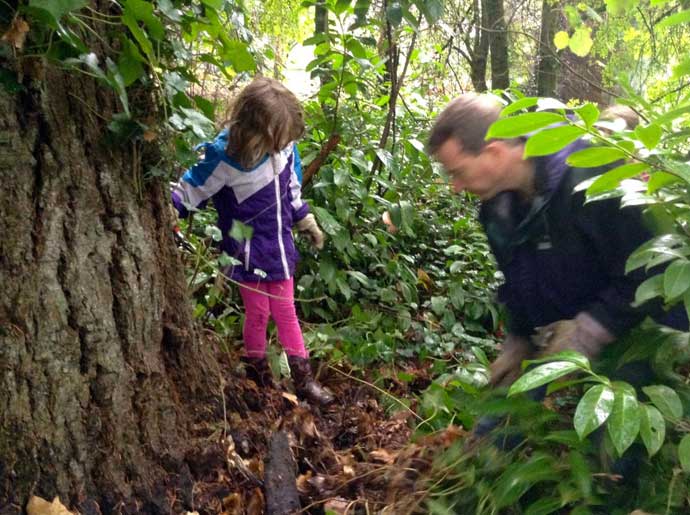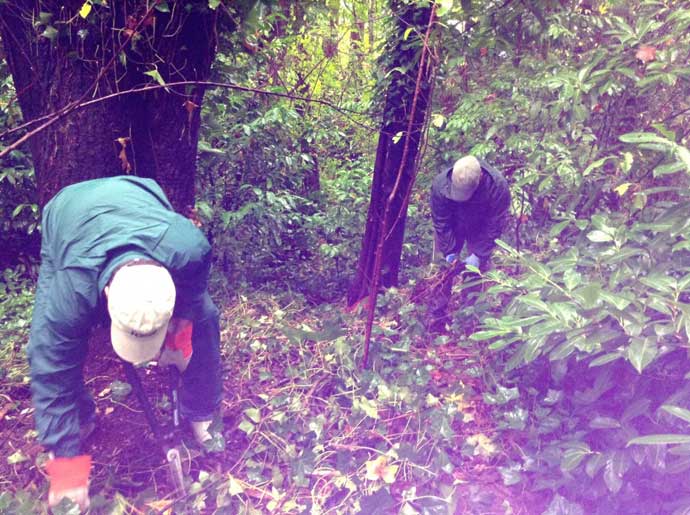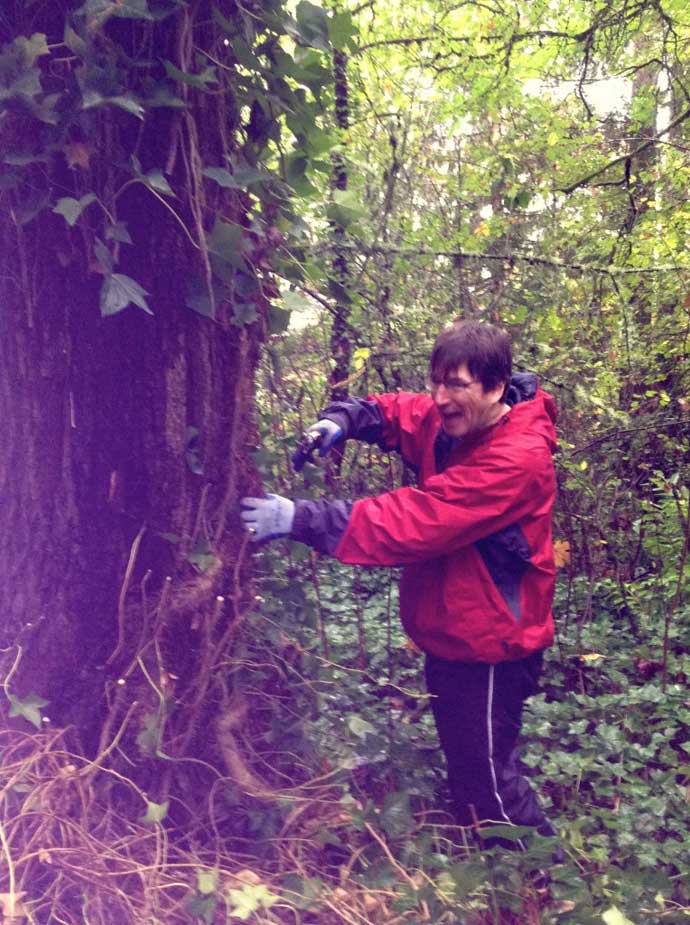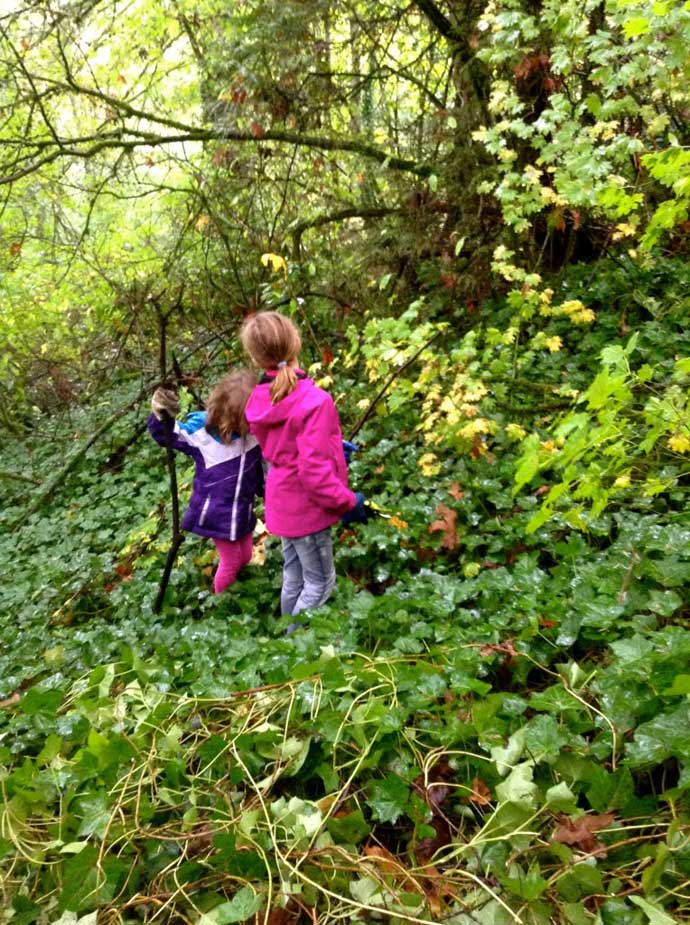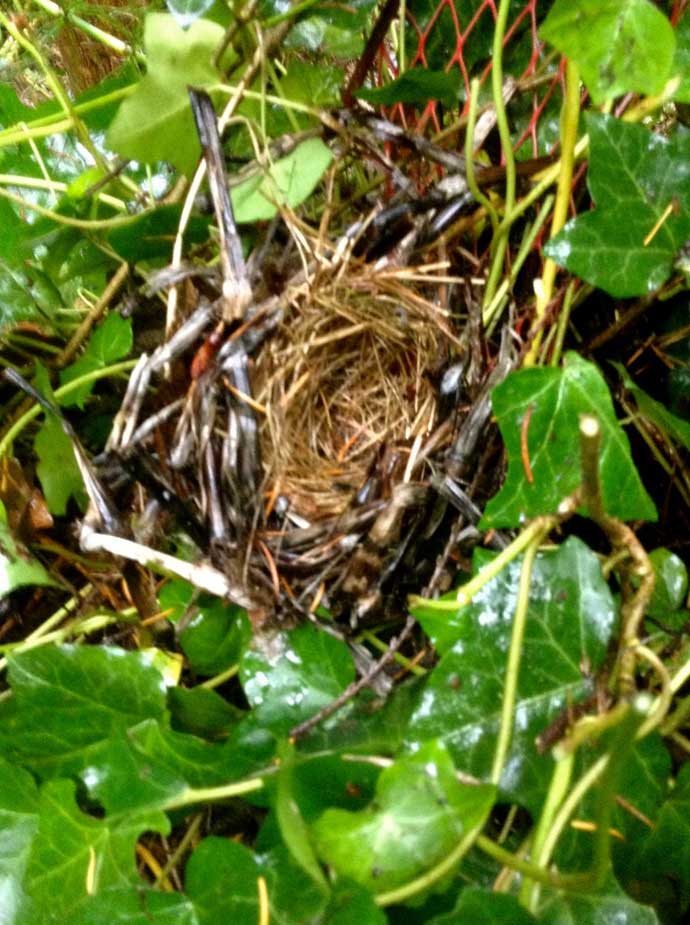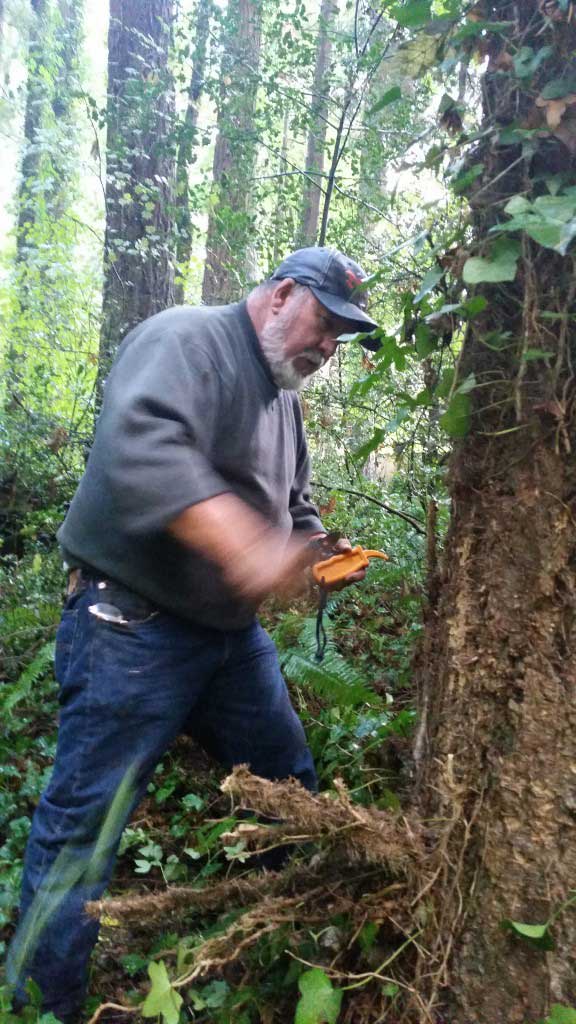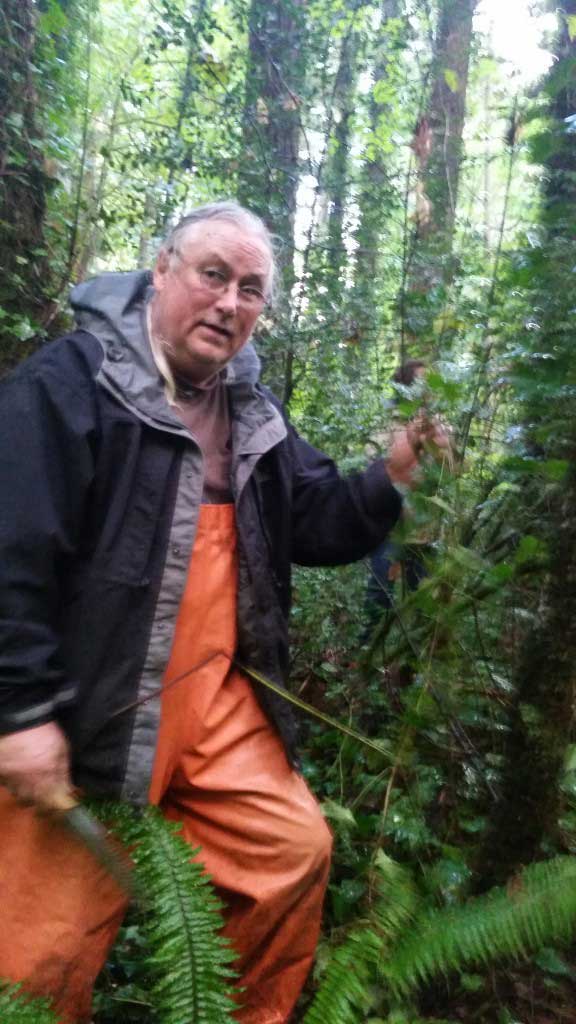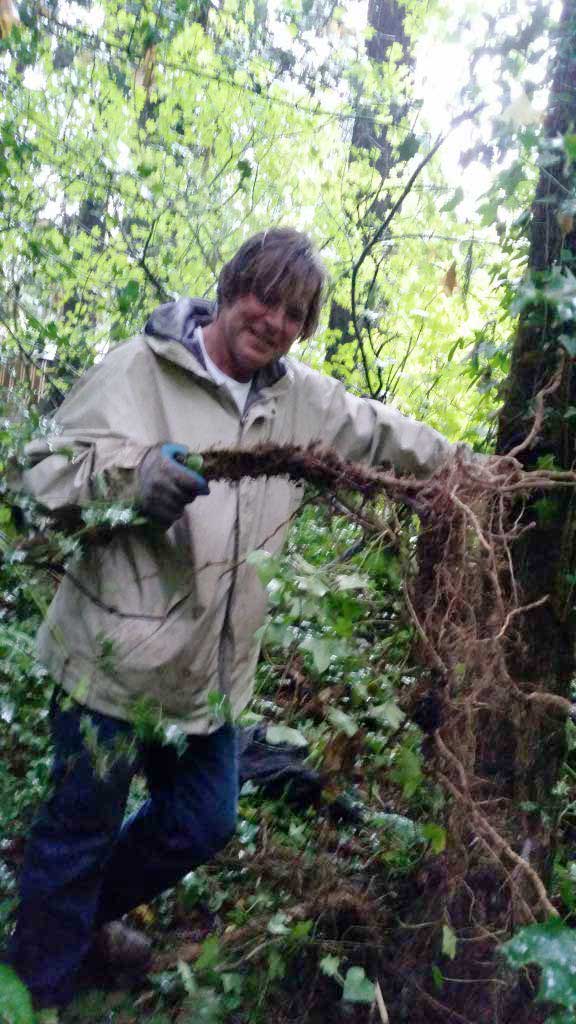No Ivy Day
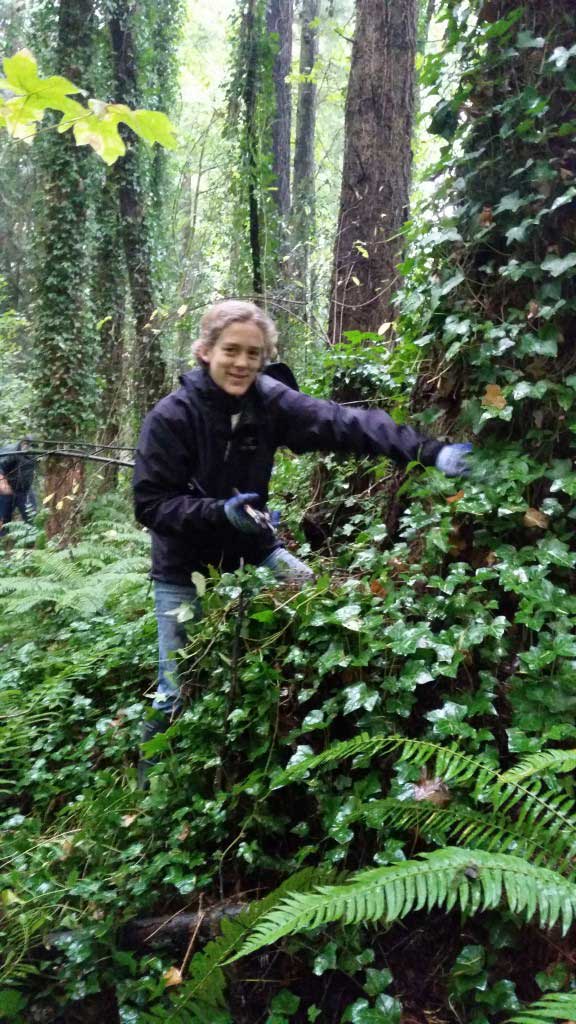
We had a great turnout to both of our sites for No Ivy Day on Saturday, October 25. If you are not familiar with No Ivy Day, it is an annual city-wide event sponsored by Portland Parks and Recreation. Started in 2003, No Ivy Day is an event that reduces the amount of mature ivy in the Portland metro area while also educating the public about ivy and its negative impacts on local ecosystems.
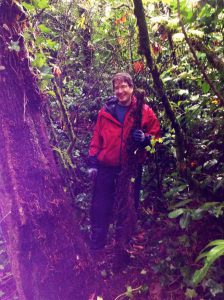
We were thrilled to participate in this city-wide effort by hosting not one but two ivy removal sites! One group meet at the Oak Creek HOA, a brand-new site for TCWC, and the other was at Arnold Creek, an important tributary to Tryon Creek.
We had 16 total volunteers (eight at each site), which included a nice mix of local neighbors, repeat volunteers, and a few of our board members! After some coffee and an introduction, our volunteers set to work. Rain clouds loomed overhead but (thankfully) held off the entire morning, giving us nice, cool working conditions. The terrain was steep and slippery but that did not deter our volunteers. By noon, we had removed ivy from over 90 trees (30 at Oak Creek, 60 at Arnold Creek)!
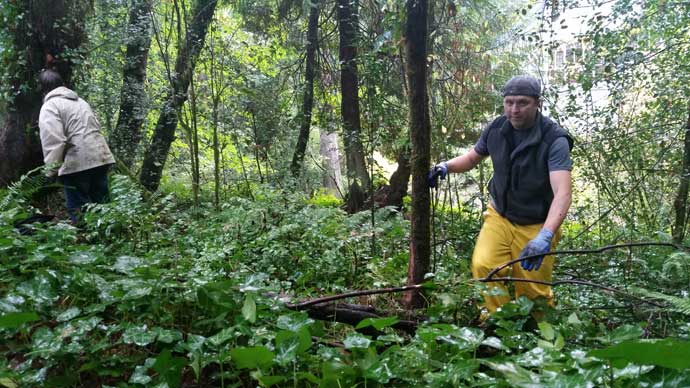
Ivy that climbs trees is a concern for two reasons. First, if left long enough, the ivy will eventually kill the tree. From the perspective of a watershed, trees are essential to provide habitat for wildlife and to shade creeks and rivers to maintain healthy temperatures for aquatic life. When water gets too warm, fish and other species cannot survive. Second, once ivy starts to climb upwards, it is able to fully mature, flower, and spread its seed. By removing it from trees, we are slowing down the plant’s ability to reproduce.
To remove ivy effectively from the trees at our sites, we used the “lifesaver” technique:

Step 1. Find ivy-infested tree 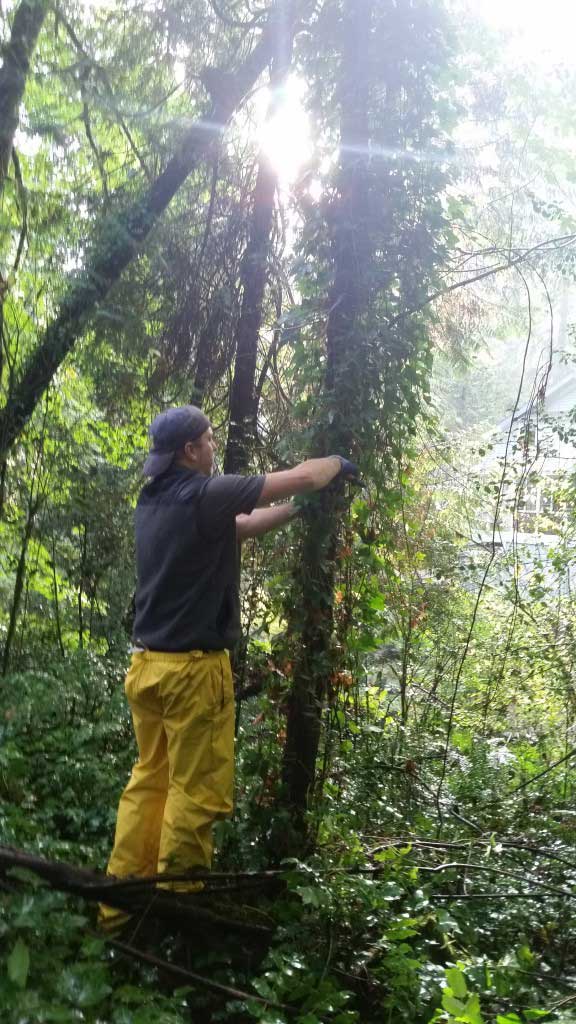
Step 2. Clip ivy at chest-height all around the diameter of tree 
Step 4. Remove ground ivy in a three foot diameter around the base of the tree 
The finished product – an ivy-less tree!
The lifesaver method takes a little bit more time but is very effective in protecting each tree from ivy invasion. Do you have an ivy covered tree in your yard? Try this method and help remove ivy in your own area – all you need is hand clippers and gloves (although a saw and grubbing tool can be handy, too).


